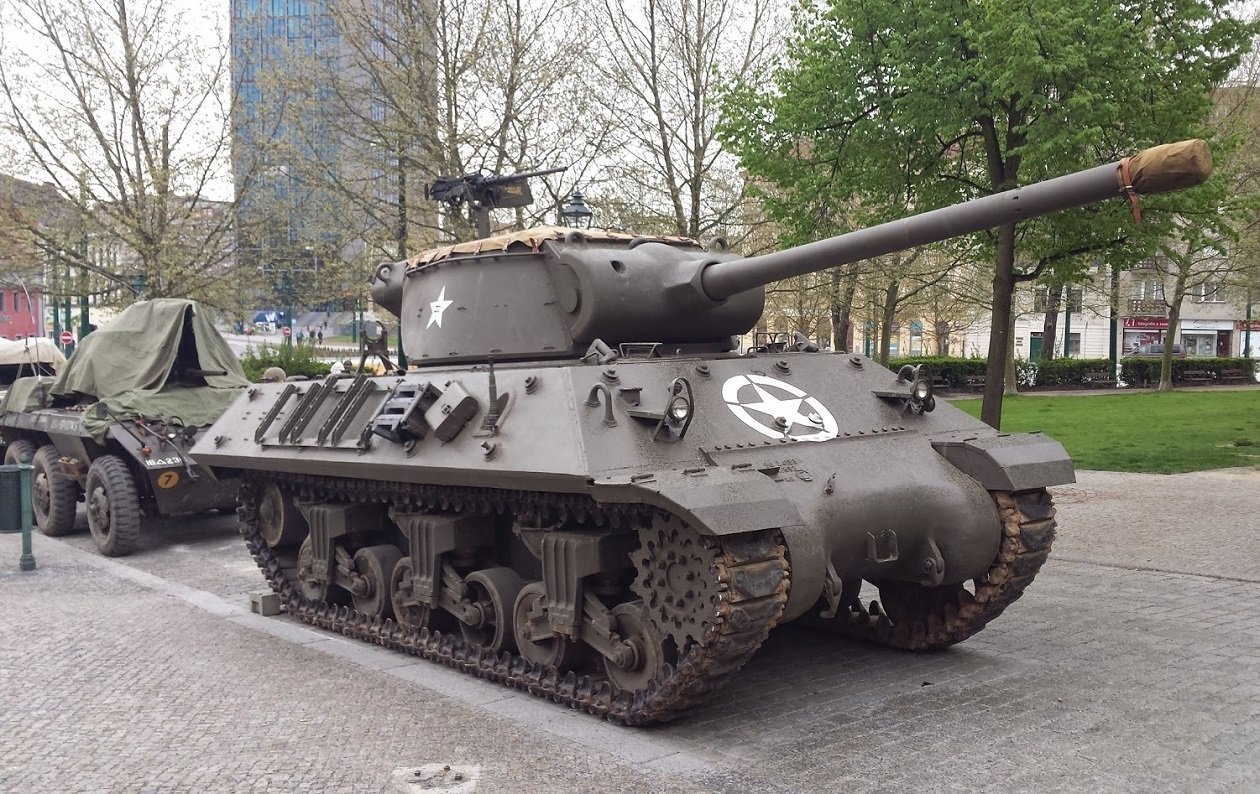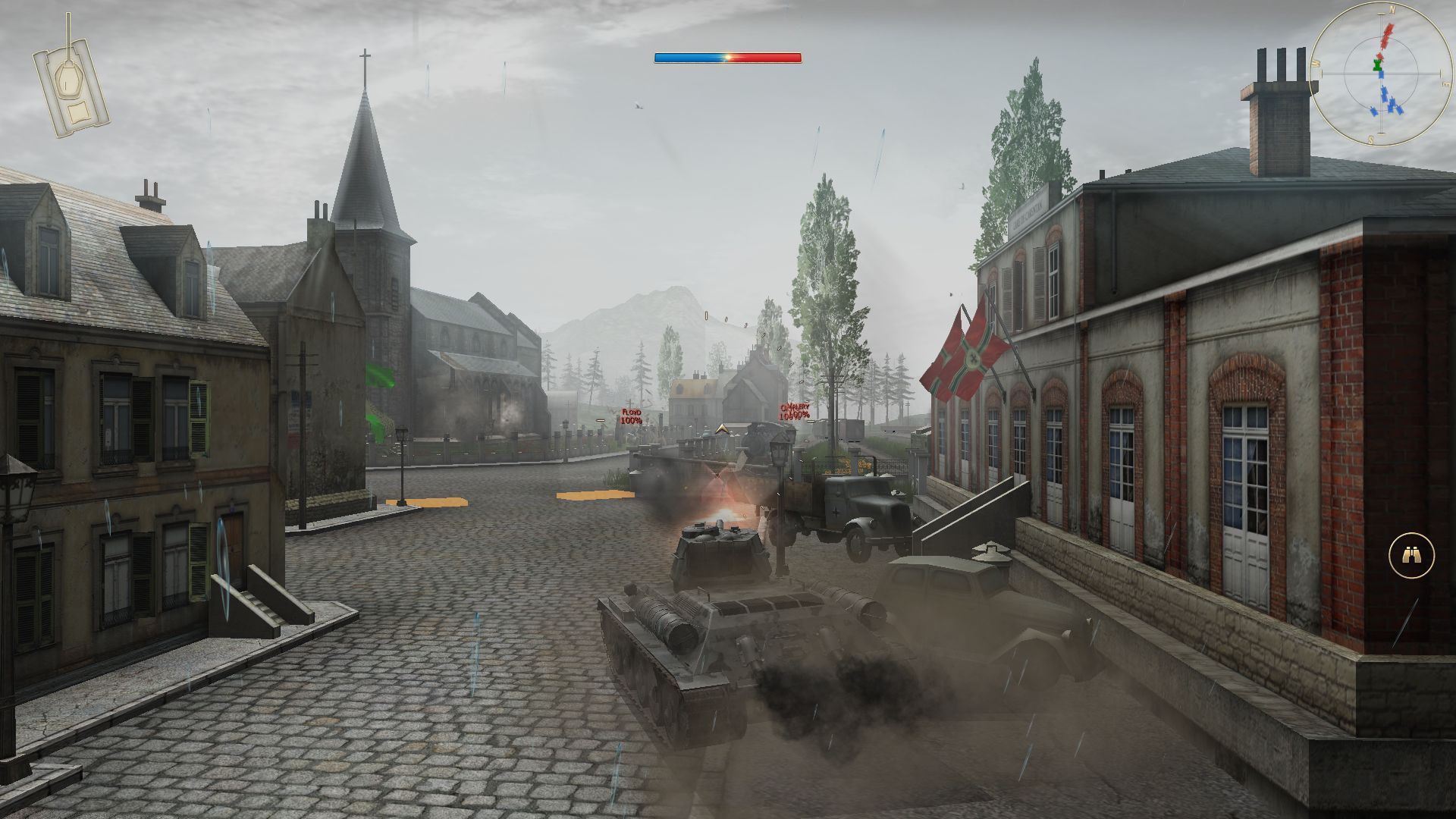Best Wwii Tank - The armored tank, a British invention, arrived at the end of World War I. The goal was to break the stalemate of trench and gas warfare. However, first-generation tanks were slow, lacked firepower and were cumbersome to maneuver, and crew-infantry communication skills were poor. Between the wars, the Germans perfected the tank as a fast, well-armored shock weapon and in 1939 showed the world the power of a highly mobile, new type of combined arms warfare called the Blitzkrieg. Machine gun bullets ripped through his armor and all the forces dug into the soldiers crushed these monsters with ease. Thus, the tank had a powerful demoralizing effect on the infantry.
America's response was to produce and ship about 50,000 M4 Sherman tanks to Europe. Although underpowered and cushioned, the Sherman had the advantages of mobility, reliability, and advanced features such as a servo-controlled turret and gyro-stabilized cannon. To compete in the war, the Americans had to find new tactics of advance posting and maneuver to hit the Germans with their weak flank and rear armor.
Best Wwii Tank
/img/iea/XD6KWE946v/best-tanks.png)
Where is the great American movie showing people what it was like to live and fight in a Sherman tank? The deafening roar of engines and guns, the foul cabin smell of grease, gunpowder, body odor and urine, and the claustrophobic fear of knowing that an enemy shell and an entire tank, petrol and ammunition are likely to blow up. Crew burned alive? Tank vs tank battles? Team work of the commander, driver, loader and gunner in achieving the target and executing the firing sequence? The world's first tank as we know it was invented in Great Britain and came out of the Lincoln Fosters prototype. It was known as "Little Willie" and was in production until late 1915.
Germany: World War Ii Tank In Retiree's Basement Leads To Legal Spat
Little Willie was built from components designed by several industrialists, including imported American tracks and technology developed during earlier war projects. It was built on a non-suspended track frame and equipped with a dummy turret with a non-rotating machine gun mount. It was 8 meters long and required two men to operate it; One for steering wheel, clutch, transmission and throttle control and one for brakes. Four other weapons were used. It was protected by boiler plate armor and could only travel two miles per hour.
But Little Willie never saw combat despite being developed during the Great War of 1914-1918. Instead, it paved the way for another prototype, the Big Willy and later the Mother, which used a diamond-shaped track frame that allowed the track to move to the right. The vehicle surround and turret were replaced with side sponson armament.
The first tank to actually see combat in the British Armed Forces was known as the Mark I. The tank had two variants, a 28-ton male armed with two six-barrel guns and three 8mm Hotchkiss machine guns and a 27-ton female variant with four .303-i. Vickers machine gun and single Hotchkiss. Each tank had eight soldiers.
The first purpose-built infantry tanks were the machine-gunned Matilda I and the machine-gunned Matilda II, armed with a machine gun and a QF 2-pounder anti-tank gun. Manufacturers built 2,987 Matilda IIs between 1940 and 1943.
World War 2 Tanks
The Matilda tanks were followed by the Valentine and Churchill tanks, which were designed using the interior and chassis layout of an experimental model called the A10. The Valentine was developed in 1939 and by 1944 8,275 had been built. Although stable and reliable, it is hampered by its small size.
The Churchill initially had a number of mechanical flaws, but the tank had excellent weight distribution and was considered very stable while underway.
British tanks grew larger and were fitted with more powerful engines, allowing them to carry larger guns and more armor and move at higher speeds.

At the end of World War II, the Centurion, known as the "Universal Tank", was created. The Centurion was the main British tank in the post-World War II era. Its development began in 1943 and production began in January 1945. It entered combat with the British Army in 1950 in support of UN forces in the Korean War. With high mobility, it was able to climb hills considered difficult for infantry and carried the L7 105mm gun. A total of 4,423 Centurions were built between 1946 and 1962. It became one of the most widely used tanks in the world's armies.
Spearhead' Is A Wwii Book On Tank Strategy, But Humanity Is Central Focus
Equipped with the L7, the Centurion was equipped with an improved gun and transmission and improved protection and firepower, and the new prototype was known as the Chieftain. The Chieftain was one of the most heavily armored and armored tanks of its time.
The development of Chobham, a composite armor developed in the 1960s, led to the development of a new tank known as the Challenger, along with many other improvements. The Challenger used a laser range finder in a highly automatic fire control system. It had an improved engine and suspension that offered better off-road performance.
In 2003, the UK was a key player in the invasion of Iraq and led a force of 112 Challenger 2 tanks. The Challenger 2 is now the core of the Army's heavy tank unit. It is known for its durability and resilience due to its ceramic-based Chobham armor that can withstand extreme heat and shock.
The Challenger 2 is the result of over 150 major changes to the original Challenger model, including an all new turret, L30 CHARM 120mm gun and second generation Chobham armour.
The Best German Wwii (not)tank — Steemit
The Challenger 2 Black Night Life extension project incorporates the latest technologies from BAE Systems, including an active defense system that allows the tank to detect incoming anti-tank missiles or anti-armor weapons and automatically launch an anti-explosive device.
It has a laser warning system so that when targeted by enemy weapons, the tank can detect and automatically direct the gun to the source. It has regenerative braking which makes it more energy efficient by generating force as the weapon slows down. It can be argued that the best tank is the one that destroys the enemy. Or, depending on your perspective, it doesn't shoot you.
But otherwise, picking a top tank is always a technical and historical analysis nightmare. There are so many variables and so many experts and history buffs who will debate these variables to death. But in comes Armored Champions: The Top Tanks of World War II, written by Steven Zaloga, a defense analyst and noted author on World War II armored warfare.

Sorry, armor fans, but there isn't! Zaloga wisely avoids the scientific minefield by choosing The Greatest Generation's Greatest Tank. "Protected by 45mm armor, the tank was invulnerable in 1941, but by 1945 it was doomed to rapid defeat," he writes. "The tank armed with the 76 mm gun was the world champion in 1941, but by 1945 it was the pop weapon of tank-to-tank duels."
Was The Sherman Tank Better Than A German Tiger In Wwii?
Instead, the "armored champion" hedges by spreading his bets. Instead of one of the best tanks for WWII, one of the best tanks
War years. More importantly, how does the author address the question of why the seemingly "best" tanks often end up on the losing side. For example, vastly inferior German armor decimated Soviet tank fleets in 1941, while Israeli Super Shermans—improved remnants of World War II—destroyed modern Russian tanks in 1973.
Champion every year. First, what he calls "tanker preference," is given to the vehicle that ranks highest in the traditional criteria of firepower, armor, and mobility. But the second, he calls a "commander's choice," is based on the tank's overall utility, which takes into account factors such as reliability and production volume. So, while Germany's legendary Tiger has more firepower and armor than the humble StuG III assault gun (a turretless tank with one gun tucked into the hull), "the German army could have bought 10 StuG III assault guns or three Tiger tanks," he writes. Zaloga. . "Considering reliability, the Wehrmacht could have seven operational StuG IIIs or one operational Tiger tank."
This choice of analysis yields surprising results. French armor gets as much respect as Rodney Dangerfield, but in 1940 the Somua S-35 won choice of tanker for its balance of armour, firepower and mobility. Yet the problem with the S-35 and many other Allied tanks from the start of the war was their two-man turrets, where the tank commander was also responsible for firing the gun. This meant that the tank commander could not keep his eyes on the battlefield, which meant a lack of situational awareness and an inability to react to changing battlefield conditions.
Greatest Victories Of The T 34 And Its Crew
In contrast, the German Mark IV, with its low-velocity main gun, may have been inferior on paper. But it had a three-man turret with a designated gunner and loader, leaving the commander free to actually control the tank. So the Mark IV wins the commander's choice because it was a better means of winning wars.
Some of Zaloga's choices are less surprising. The only tank
Sig p365 tulster holster, sig p365 iwb holster, sig holsters p365, sig p365 sas holster, sig p365 xl holster, sig p365 hybrid holster, appendix holster sig p365, safariland holster sig p365, sig p365 belt holster, sig p365 holster, sig p365 purse holster, sig sauer p365 holster
0 Comments